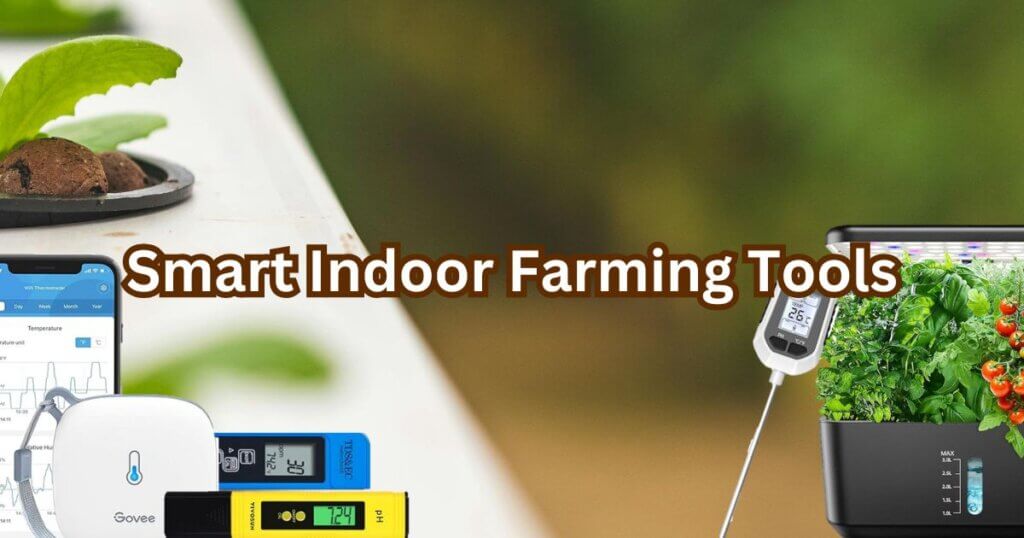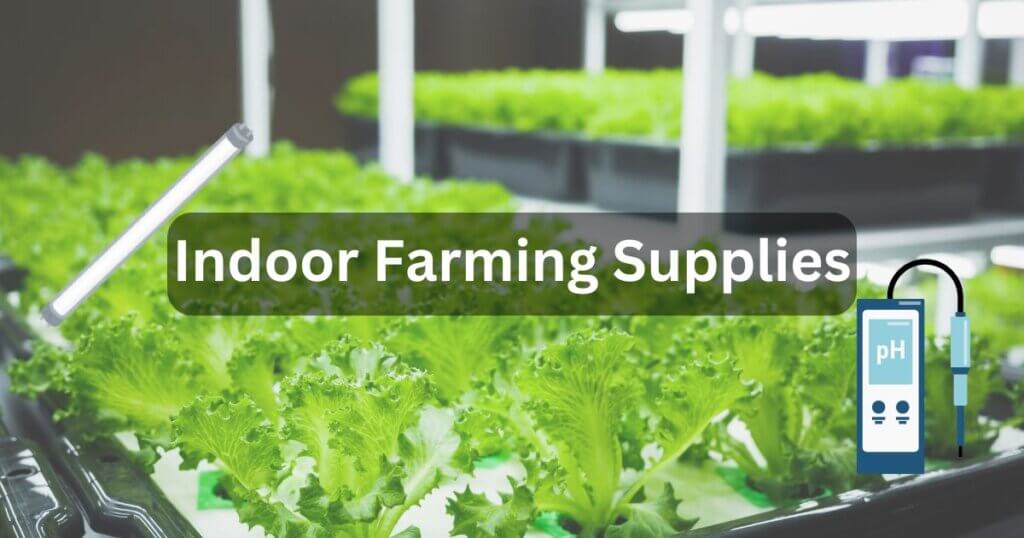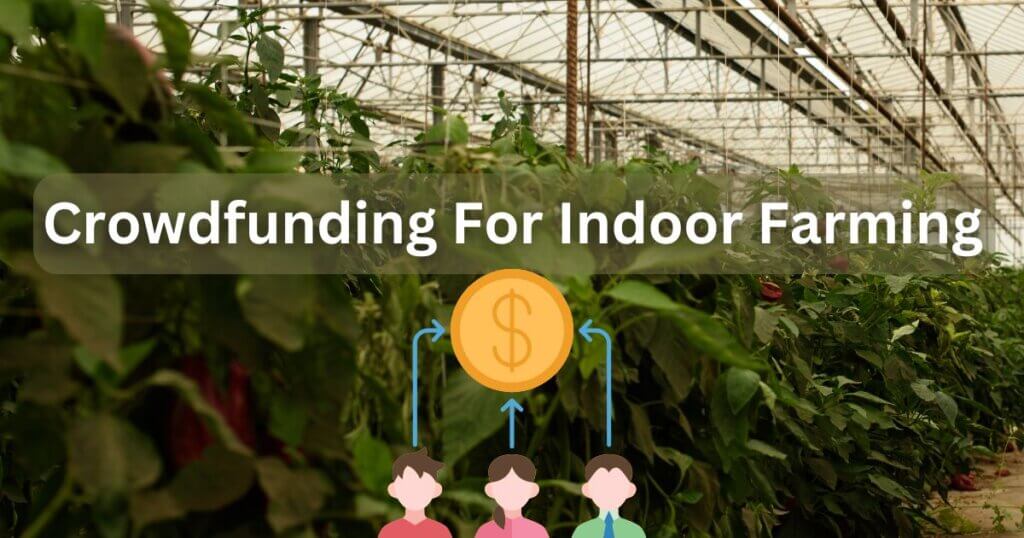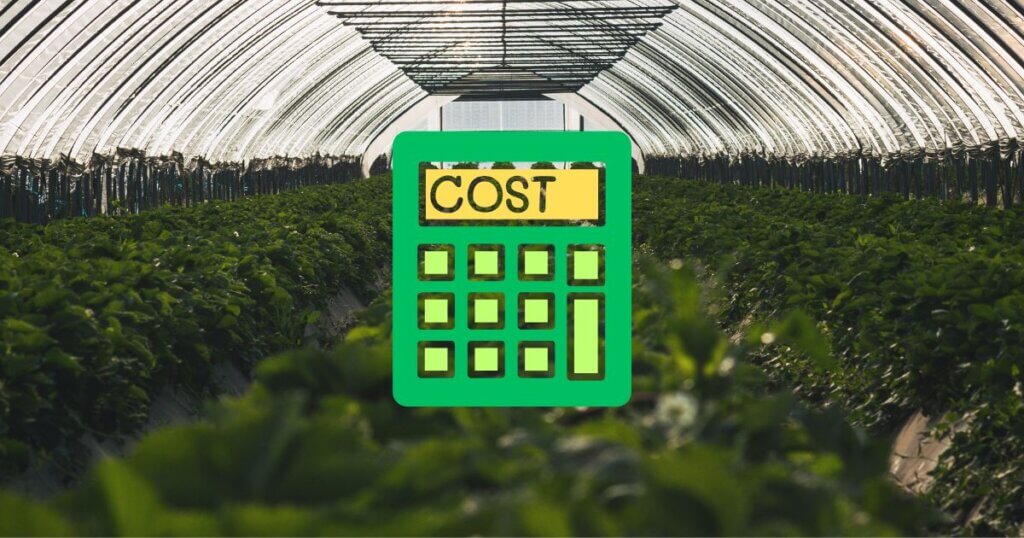10 Must-Have Smart Indoor Farming Tools That Will Revolutionize Your Grow Space

Some of the links in this post are affiliate links. As an Amazon Associate, we earn a referral fee from qualifying purchases—at no extra cost to you.
Ever dreamed of growing your fresh herbs, lettuce, or strawberries year-round, right in your apartment? Welcome to the future of farming—where smart indoor farming tools are turning ordinary homes into efficient, high-yield growing environments. These aren’t just gadgets; they’re powerful technologies reshaping how we grow food indoors. Whether you’re an urban gardener, a tech enthusiast, or someone tired of tasteless supermarket produce, smart tools can help you grow better, faster, and smarter.
Let’s dive into the world of intelligent indoor farming gear that makes your plants thrive while you kick back and enjoy the harvest.
Table of Contents
Why Smart Indoor Farming Tools Are a Game
Smart indoor farming tools are more than a luxury—they’re becoming a necessity. With global food challenges, climate change, and limited outdoor space, tech-powered growing is the perfect solution for urban living. They help automate tedious tasks like watering, lighting, and temperature adjustments. More importantly, they empower growers with real-time data, predictive insights, and remote control from a smartphone. It’s farming reimagined—with brains.
The Rise of Smart Agriculture in Indoor Environments
The smart agriculture revolution started in sprawling commercial greenhouses. But now, thanks to the Internet of Things (IoT) and compact hardware, it’s entering our homes. From AI-powered hydroponic systems to voice-controlled grow tents, the market for smart indoor farming tools is booming. According to research, indoor farming tech adoption is growing at over 20% annually, and for good reason. You’re no longer guessing what your plant needs. Your tools tell you.
Benefits of Using Smart Tools in Indoor Farming
Smart indoor farming tools maximize crop yields with minimal effort by automatically optimizing light, nutrients, and water, resulting in more produce with less manual labor. Enhanced monitoring through sensors and mobile apps lets you track plant health, temperature, humidity, and light levels remotely, allowing early intervention before problems escalate. Precision systems reduce water and energy waste by delivering only what’s needed, when it’s needed—cutting both resource use and costs. Together, these innovations make growing fresh herbs and veggies easier, more efficient, and eco-friendly.
Essential Smart Indoor Farming Tools for Every Grower
1. Smart Grow Lights
Lighting is everything in indoor farming. Smart LED grow lights mimic natural sunlight and adapt to plant needs throughout the day. Many high-end models let you fine-tune the light spectrum for leafy greens, fruiting plants, or seedlings. You can also schedule light cycles via an app or smart assistant. Popular choices: Mars Hydro Smart Series, Spider Farmer SF Series.
The Spider Farmer SF1000 is a top-tier smart grow light with a dimmable function, full-spectrum light for all growth stages, and high energy efficiency. It’s widely used by indoor growers and fits perfectly into this section where you recommend smart lighting solutions.
2. Automated Climate Control Systems
Your indoor garden’s climate can make or break your results, but devices like the Inkbird WiFi Controller let you automate temperature and humidity to stay within ideal ranges. With this kind of precision, you can say goodbye to mold, wilted leaves, and unpredictable growing conditions. It ensures a stable environment tailored to your plants’ needs. The result is healthier growth with less guesswork and maintenance.
The Inkbird WiFi ITC-308 lets you automate heaters and humidifiers, ensuring a stable environment for your plants. It connects to a mobile app for remote control and alerts when your grow zone shifts outside optimal ranges.
3. Intelligent Hydroponic Systems
Forget soil. Hydroponic setups grow plants in nutrient-rich water—and smart versions make them effortless. Systems like AeroGarden or Lettuce Grow feature smart pumps and nutrient sensors that adjust feeding schedules and oxygenation automatically.
The AeroGarden Bounty Basic offers a smart, countertop hydroponic setup with built-in LED grow lights, automated watering, and nutrient reminders. It’s perfect for beginners and small spaces, delivering fresh herbs and greens year-round.
4. IoT-Based Environmental Monitors
You can’t improve what you don’t measure. These tools give you deep insights. Tools like the SensorPush or Govee WiFi Sensor track temperature, light, humidity, and CO₂ levels. Get alerts if something’s off—even if you’re miles away.
The Govee WiFi Sensor tracks temperature and humidity in real-time, sending alerts to your phone if readings move out of range. Use it to fine-tune your grow space and prevent issues like mold or stunted growth.
5. Smart Irrigation Systems
Watering can be tricky. Too little or too much kills your crop. Smart irrigation setups read soil moisture levels and deliver water only when needed. Look for systems with programmable drip lines and app control.
The Moistenland WiFi Watering System uses soil moisture sensors and pre-set schedules to water your plants only when needed. Great for potted herbs and apartment setups, especially for frequent travelers or busy growers.
6. Remote-Controlled Grow Tents
Smart grow tents come equipped with integrated lighting, fans, and cameras. Control everything from a single dashboard: adjust settings, watch your plants grow, or activate night cycles with a tap. Vivosun and AC Infinity offer excellent smart grow tents.
The VIVOSUN Smart Grow Tent Kit includes an LED light, ventilation system, and smart controls—all managed via your smartphone. Its plug-and-play setup makes it a go-to for hobbyists ready to scale up their indoor farm.
Top Brands Offering Smart Indoor Farming Tools
1. AeroGarden
Best known for countertop hydroponic systems, AeroGarden provides plug-and-play setups with intelligent lighting and feeding reminders.
2. Click and Grow
These minimalistic units such as Click and Grow are perfect for beginners and use NASA-inspired tech to optimize growth conditions.
3. Gardyn
An AI-powered vertical farming system (Ahopegarden) that uses vision and data to manage your plants automatically.
4. Rise Gardens
Vego garden Raised Garden Bed Kits integrate beautifully into home kitchens and living rooms while giving you serious growing power.
How to Choose the Right Smart Indoor Farming Tools
1. Match the Tool to Your Crop Needs
Not all tools are created equal, so it’s important to pick wisely. If you’re growing leafy greens, focus on lighting and humidity control for optimal results. For fruiting plants like tomatoes or strawberries, you’ll need tools that offer advanced climate and nutrient automation. Matching tools to your crop ensures healthy growth and better yields.
2. Assess Your Space and Budget
Your available space and budget should guide your choices. Compact smart systems are perfect for small apartments or kitchen counters. If you have a dedicated grow room, modular setups offer greater scalability. Don’t forget to factor in energy and water usage to stay efficient and cost-effective.
3. Prioritize Integration and Ease of Use
Look for tools that can seamlessly work together within a single app or smart ecosystem. Integration simplifies management and reduces the need to juggle multiple platforms. User-friendly interfaces save time and lower the learning curve. Choosing compatible, intuitive tools now prevents future frustrations.
Setting Up Your Smart Indoor Farm: Step-by-Step Guide
1. Planning the Layout
Start by sketching your growing area to visualize the setup. Ensure there’s enough space for proper airflow, safe power connections, and easy access to plants. A clear layout prevents overcrowding and system failures. Planning ahead makes installation smoother and more efficient.
2. Installing Smart Components
Mount your grow lights securely above plant height, and position sensors at the level where plants will grow. Carefully lay out irrigation tubing to avoid leaks or tangles. Always follow the manufacturer’s manuals for safe and effective setup. Precision now saves troubleshooting later.
3. Connecting Devices to Your Smartphone or Hub
Sync your tools using apps or smart home hubs like Alexa or Google Home. Many devices offer quick-start tutorials or QR-code pairing to simplify the process. Centralizing control lets you manage everything from one place. This makes automation seamless and daily care effortless.
The Echo Show 8 integrates seamlessly with Alexa-compatible smart garden tools. Use it to monitor grow light schedules, check temperature readings, or control your irrigation system with voice commands or visual dashboards.
Avoiding Common Smart Garden Mistakes
Overcomplicating Your Setup
Packing your grow zone with too many gadgets can lead to unnecessary confusion. It’s better to start with a few essential tools and expand as you get more comfortable. Simplicity keeps things manageable and reduces setup errors. As your confidence grows, so can your system.
Ignoring Data Insights
Smart tools provide valuable data—don’t let it go to waste. Regularly check trends like temperature, humidity, and growth rates. Use this information to make informed adjustments to your setup. Monitoring data helps you catch issues early and fine-tune performance.
Neglecting Maintenance and Updates
Even the best tools need regular care to stay accurate and efficient. Clean your sensors, update firmware, and calibrate devices on a consistent schedule. Neglecting maintenance can lead to false readings and poor plant health. A little upkeep goes a long way in protecting your investment.
Are Smart Indoor Farming Tools Worth the Investment?
Absolutely—if used right. These tools pay for themselves over time by reducing crop failures, conserving water and energy, and boosting overall yields. They also bring a sleek, modern feel to your space, combining functionality with futuristic design. It’s like having a personal gardener on call 24/7, making indoor farming easier, smarter, and more rewarding.
Conclusion: Embrace Smart Tools and Grow Like a Pro
Smart indoor farming tools are your shortcut to better harvests, healthier plants, and a more sustainable lifestyle. Whether you’re growing basil in a sunny kitchen corner or feeding your family from a high-tech garden wall, these innovations make the process simpler and more efficient. They eliminate guesswork, automate key tasks, and help you grow more with less. The future of farming is personal, precise, and powerful—and it starts right inside your home.
FAQs About Smart Indoor Farming Tools
1. Do I need a WiFi connection for smart indoor farming tools to work?
Yes, most smart farming tools require a stable WiFi connection to sync with mobile apps or smart home hubs. Without internet access, you may lose remote control, data tracking, or real-time alerts—though some tools still offer limited offline functionality.
2. Are smart farming tools safe to use around children and pets?
Generally, yes—most systems are designed with household safety in mind. However, it’s important to keep cords, sensors, and nutrient solutions out of reach of small children and pets, especially in open setups or grow tents.
3. How much electricity do smart indoor farms use?
Electricity usage depends on the size and type of system. Energy-efficient LED grow lights and programmable climate controls help minimize power consumption, and many tools are designed with eco-friendly operation in mind. Monitoring your usage through smart plugs can help optimize performance and savings.
4. Can I grow organic food using smart indoor farming tools?
Yes, you can grow organic produce indoors—just use certified organic seeds and nutrient solutions. The smart tools help automate care, but the “organic” label depends on the materials you use and how you manage the growing environment.
5. What happens if one smart component fails—will it affect the entire system?
Not necessarily. Many tools operate independently or within modular systems, so a single failure (like a broken light or offline sensor) won’t shut down your whole farm. However, having backups and regularly checking system alerts ensures smooth operation and prevents crop loss.
Some useful resources related to Smart Indoor Farming Tools
1. Vertical Farming: Everything You Need to Know | Eden Green
This comprehensive guide explores the principles of vertical farming, its benefits, and the technologies that make it possible, such as controlled environment agriculture (CEA), hydroponics, and LED lighting systems.
🔗 Read the full article
2. Top 10 Vertical Farm Equipment Must-Haves for Successful Indoor Farming | OptiClimateFarm
This article outlines essential equipment for vertical farming, including LED grow lights, automated irrigation systems, and climate control units, emphasizing their role in optimizing plant growth and resource efficiency.
🔗 Explore the equipment list(opticlimatefarm.com)
3. Indoor Farming Technology Market: 7 Shocking 2024 Trends! | Farmonaut
Farmonaut discusses the latest trends in indoor farming technology, highlighting advancements in automation, AI, climate control, and renewable energy integration, which are shaping the future of urban agriculture.
🔗 Discover the trends(Farmonaut®)
4. Growlink Smart Farm Blog
Growlink’s blog provides insights into smart farming practices, including automation, data analytics, and IoT integration, offering practical advice for both home growers and commercial operations.
🔗 Visit the blog(blog.growlink.com)
5. Best Indoor Garden System for Every Space | Architectural Digest
This guide reviews various indoor garden systems, from hydroponic setups to soil-based kits, catering to different spaces and skill levels, and includes options like AeroGarden and Click & Grow.
🔗 Read the reviews(Architectural Digest)
Some Interesting Smart Indoor Farming Tools Videos















